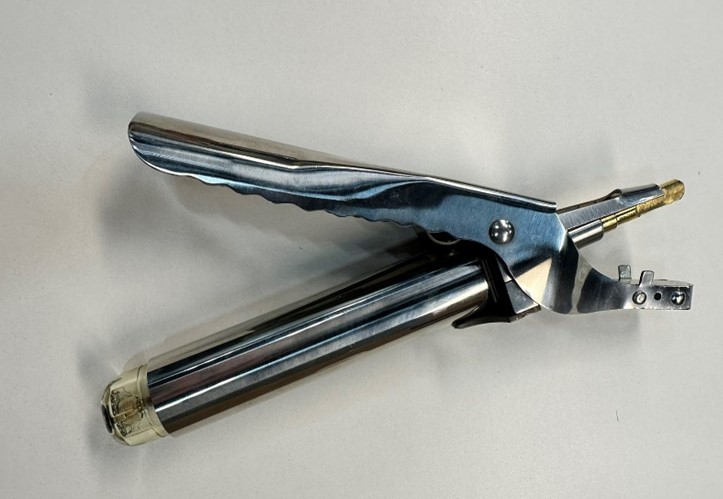The Ministry of Agriculture approved new veterinary rules for leptospirosis

Veterinary rules contain measures to prevent the disease, requirements for diagnosis, prescribe what to do if an infection is suspected and what restrictions and actions follow when introducing quarantine.
Thus, for prevention, among other things, the rules establish routine serological tests for leptospirosis in susceptible animals. In breeding farms, production animals should be checked for leptospirosis 2 times a year, and cows, heifers, sheep and goats, sows and mares – once a year. According to the new veterinary regulations, animals received at the farm must be kept in quarantine for 30 days.
To prevent leptospirosis, the rules require vaccination of susceptible animals on farms of all forms of ownership.
The rules indicate how to collect samples for diagnosis of leptospirosis and what research methods to use.
When the diagnosis of leptospirosis is confirmed, quarantine is introduced , an epizootic focus and an unfavorable point are determined.
The rules do not establish exact quarantine periods. Quarantine can be lifted after the death, slaughter or recovery of the last sick animal upon receipt of laboratory test results, the document says.
Help "ViZh"
Leptospirosis is an infectious disease of cattle , pigs, horses, sheep, goats, dogs, foxes, arctic foxes, and nutria.
Clinical signs of the disease: icteric staining of the mucous membranes, skin (in pigs it is observed only in newborn piglets), fever, necrosis of the mucous membranes and skin, hemoglobinuria, hematuria, anemia, atony of the gastrointestinal tract, abortion, birth of still or non-viable offspring. The disease may be asymptomatic.
Read together with it:
- He crawled to the icon with prayer. The true story of a man who overcame drug addiction.Alexander Ovchinnikov. Topic News. Our project's hero was a drug addict for many years. The thought that this was a dead end never left him, but his addiction proved stronger. One day, when he could no longer walk, he crawled to an icon in prayer. This became his first step toward a new life. Today, he heads a charity center that helps those who have given up hope and are unable to quit ALCOHOL an...
- Министр сельского хозяйства предлагает долгосрочные контракты для стабилизации цен на продуктыЛут подчеркнула, что за последние десять лет рост цен на основные продукты в России не превысил общий уровень инфляции, а в некоторых категориях даже отстает от нее. Тем не менее, наблюдается устойчивый рост себестоимости продукции из-за увеличения цен на технику, энергоресурсы и логистику. Для контроля ценовой ситуации министерство сотрудничает с депутатами и рядом других ведомств. Также она упом...
- Низкое предложение и устойчивый спрос: в Аргентине растут цены на мясоЦены на говядину снова выросли, что отразилось на полках супермаркетов и в мясных магазинах. За последние две недели розничные цены выросли на 8–12%, а на некоторые популярные отрубы рост превысил 15% по сравнению с октябрем. Тем не менее, продажи остаются высокими: потребители продолжают покупать, принимая новые цены и закрепляя тенденцию, которая повторяется каждый год в конце года, когда спрос ...
- Колумбия: При экспорте скота сертификация и прослеживаемость больше не являются необязательнымиВысококачественное животноводство, особенно при экспорте, требует сертификации и прослеживаемости. Это необходимые условия для выхода и конкуренции на многих международных рынках, а также на некоторых всё более требовательных внутренних рынках. Колумбийское животноводство не является исключением из этих правил, и, хотя предстоит ещё многое сделать, всё большее число ферм и компаний внедряют эти ме...
- Зеленский ввел санкции против своего бизнес-партнераМиндич и Александр Цукерман, который, как считается, отвечает за его финансовые вопросы, значатся как граждане Израиля. Санкции против них ввели на три года, они включают блокировку активов. На Украине сочли ограничения мягкими Владимир Зеленский Президент Украины Владимир Зеленский подписал указ о введении санкций в отношении совладельца студии «Квартал 95» Тимура Миндича и его знакомого бизнесме...
- Лучшие не только по молоку. Какие рекорды поставили в экспериментальной базе имени КотовскогоНовости темы Экспериментальная база имени Котовского известна далеко за пределами Узденщины благодаря высоким показателям, которых из года в год добиваются в хозяйстве. Лучшие результаты в районе агропредприятие показывает как по молоку и зерновым, так и по сахарной свекле. Страда этого года, проходившая не в самых простых погодных условиях, также стала рекордной. Хлеб – всему голова Весна 2.........




























































